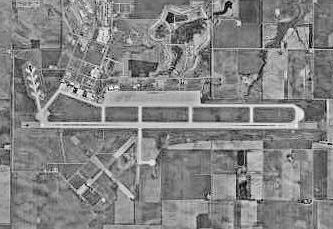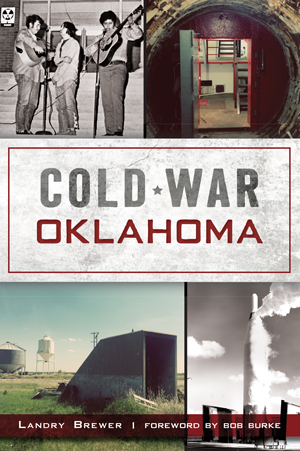
Oklahoma might seem like an unexpected place for Cold War tensions to boil over, but the state played a key role in a conflict that threatened global annihilation.
There was the Altus Air Force Base, a hub for intercontinental ballistic missiles. There was the former Oklahoma faculty member accused of committing espionage for the Soviet Union. (Another professor dug his own fallout shelter in Weatherford — by hand.) But perhaps the most memorable moment came during the Cuban Missile Crisis when an emergency siren malfunction sent terrified one city’s parents scurrying to local schools to pick up their children.
Local Threats
Though the Cold War was a dangerous time for all Americans, the danger was heightened for the residents of Elk City, Oklahoma, because nearby Clinton-Sherman Air Force Base was presumed to be a target if the Soviet Union attacked.
The facility had been designated as a Strategic Air Command base, and it operated fifteen B-52 bombers.
These bombers carried nuclear bombs and, according to their protocols, “were in the air much of the time, flying to and from the Arctic Circle.” The goal was to keep at least twelve armed B-52s in the air at all times, in case the Soviet Union attacked.
Local Preparations

The presence of the Air Force base — and of those B-52 bombers — kept Elk City residents at an especially high alert.
At Southwestern State College, now known as Southwestern Oklahoma State University, professors taught classes on “the action and dangers of radioactivity and methods of detecting and measuring it.” They taught classes in radio operation, as well, believing that ham radio operators would be crucial to the area’s civil defense if regular communications were disrupted during an emergency.
In 1962, the county’s civil defense director urged locals to prepare for a possible nuclear attack. The director reminded the public that local media would inform them of an emergency — and that they would also be warned through local emergency sirens.
Related: Desert Secrets: What’s Really Happening in Area 51?
“A warning,” the director said, “is two three-minute blasts on the local siren, and this indicates all citizens should inform themselves by radio and-or TV of the existing situation.” If an attack was imminent, the director continued, “the siren will wail continuously, warning the citizens to take the best shelter available immediately.”
Short Circuit
Elk City residents took the civil defense director’s message to heart –, especially during the Cuban Missile Crisis. Indeed, it was during these tense thirteen days that residents received the scare of their lives.
During the height of the Missile Crisis, the city’s siren system malfunctioned — twice.
When the alarms went off, the public assumed the worst. Parents rushed to the local schools to collect their children.
The Elk City Daily News described the scene at schools as a “near panic.”
Both times, it turned out to be a false alarm. The cause, the city employee in charge later said, was “an apparent short-circuit.”
__
Interested in learning more? Check out these similar titles!




